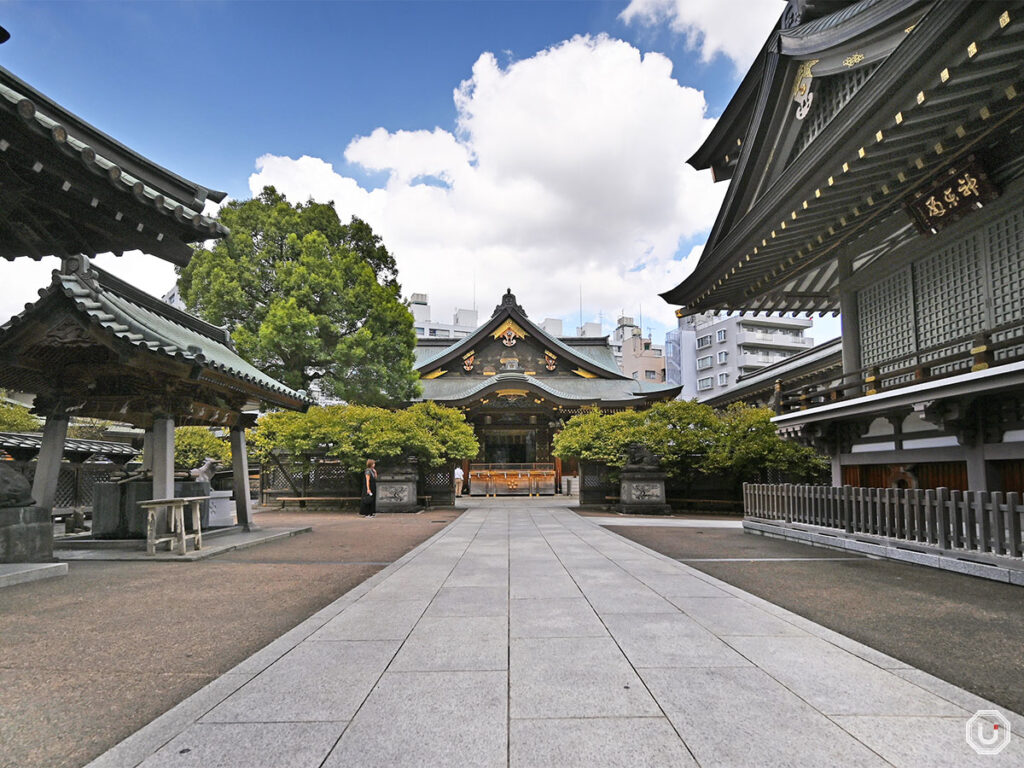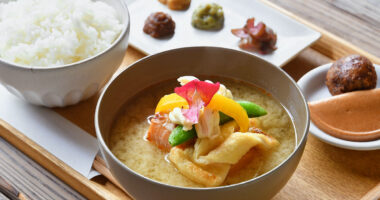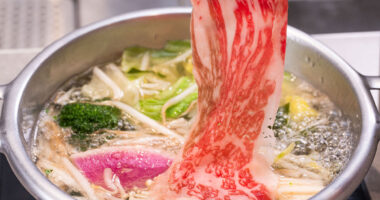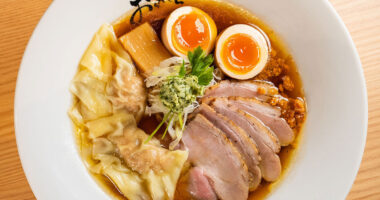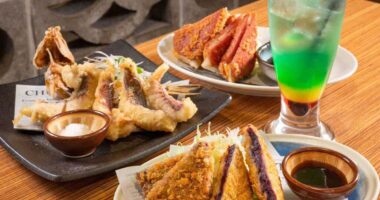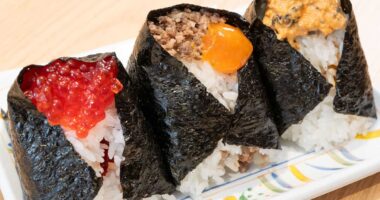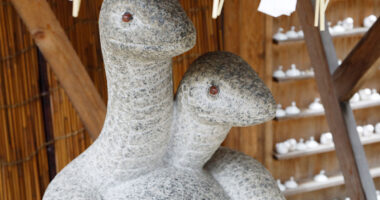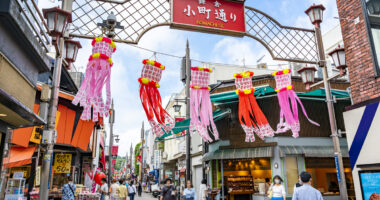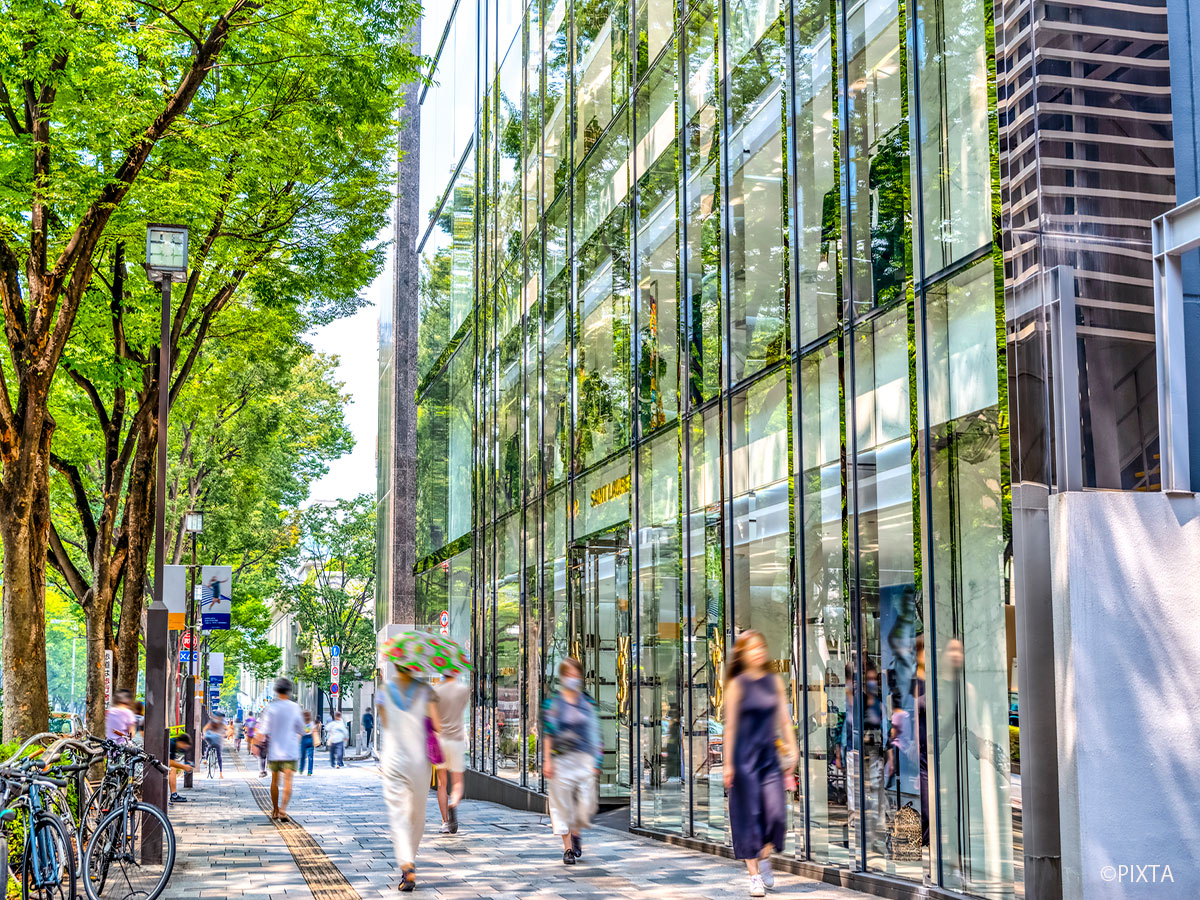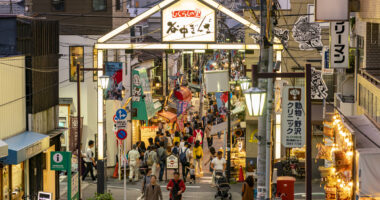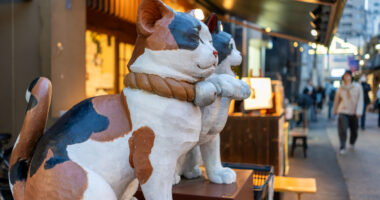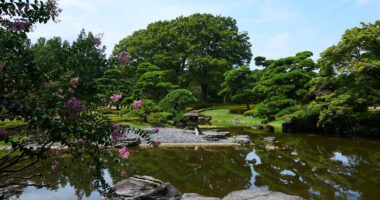Yushima Tenmangu Shrine enshrines the deification of Sugawara no Michizane, scholar and poet of the Heian period (794-1185), and deity of academics, literature, poetry, calligraphy, and the arts. It’s well-known as a place where students come to pray for success in their entrance exams. Additionally, it’s famous for its beautiful plum blossoms.
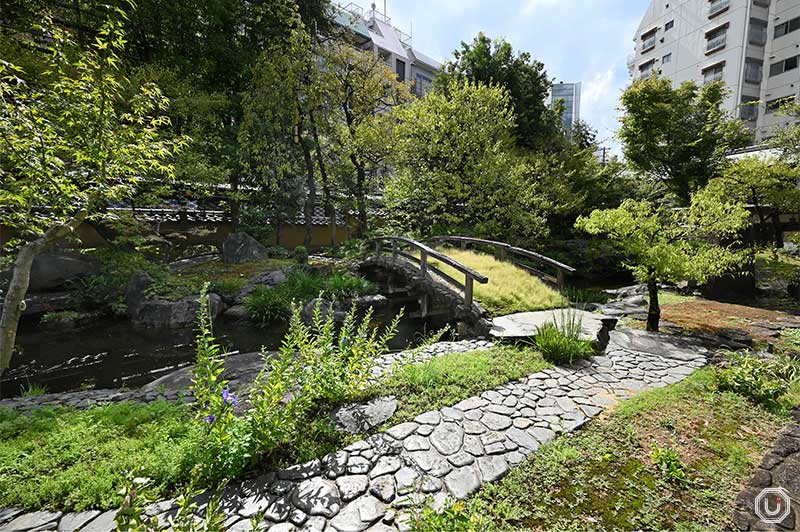
Notice the plum crest in the shrine grounds
Before offering your prayers, head to the purification water basin called temizuya or chōzuya (meaning “hand water station”) to cleanse your hands and mouth.
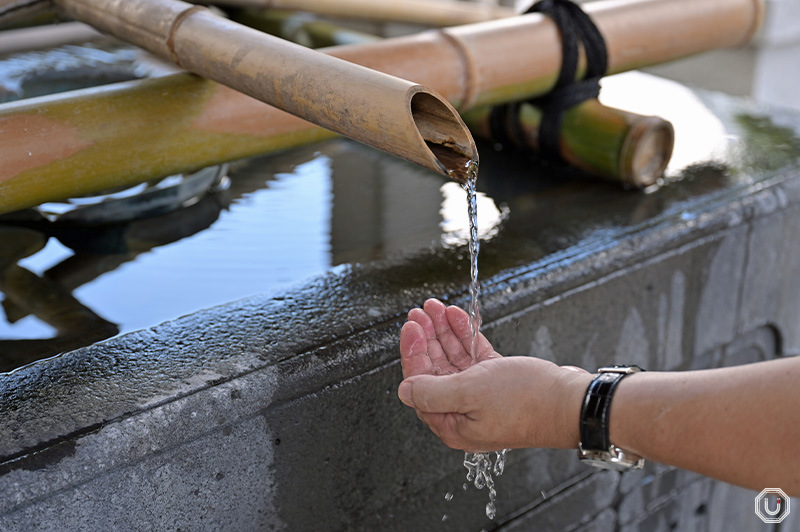
Temizuya
After cleansing, proceed to the main hall. Before the hall, place your offering in the offering box as a token of gratitude. Then, bow deeply twice, clap your hands twice, and bow once more. The key is to slightly shift your hands when clapping, as it makes a louder, clearer sound. Finally, bow deeply again. This is known as the “two bows-two claps-one bow” ritual, followed at Yushima Tenmangu Shrine and many other Shinto shrines.
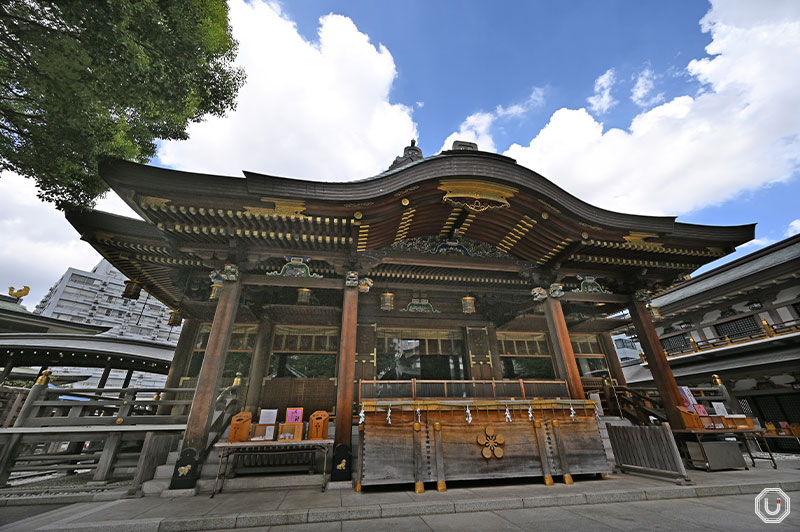
Main worship hall
While paying your respects, notice the crest composed of five circles on the offering box. This represents the plum blossom, a symbol deeply associated with the shrine. You’ll also find plum blossom crests on many of the shrine’s buildings, making it a fun activity to look for them as you explore the grounds.
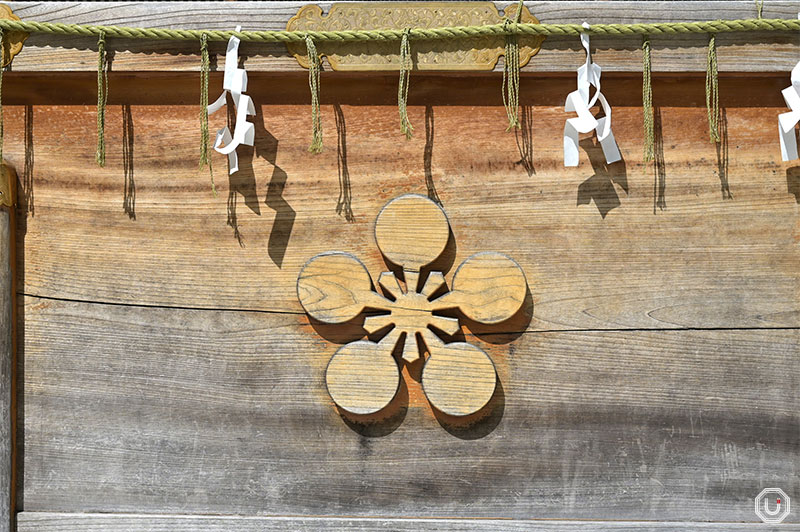
Sugawara no Michizane had a deep connection with plum trees, even composing poems about them at the young age of five. This is why the plum is deeply intertwined with Yushima Tenmangu Shrine, which honors him.
Come spring, the shrine’s garden blooms with vibrant white and red plum blossoms, offering a breathtaking sight.
Stroke the Nadeushi cow for good luck
Next to the temizuya, you’ll find a statue of a reclining cow, known as the Nadeushi (literally “cow for stroking”). Many visitors stroke its head to wish for wisdom, while others pray with their hands clasped in front of it. The cow holds a special place in the hearts of many.
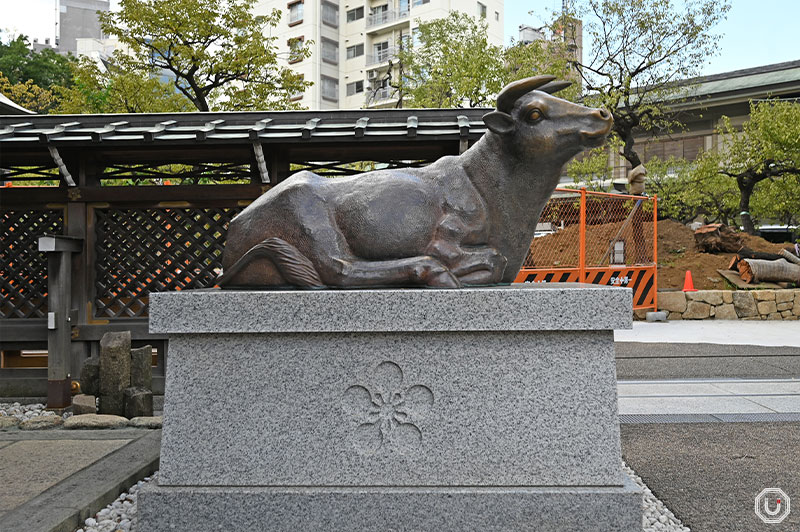
Nadeushi cow
Like the plum tree, the cow also has a strong connection with Sugawara no Michizane. Legend has it that when Michizane passed away, he instructed that his body be placed on a cow-drawn cart, and wherever the cow stopped would be his final resting place. Legend says the cow stopped where his grave is now located.
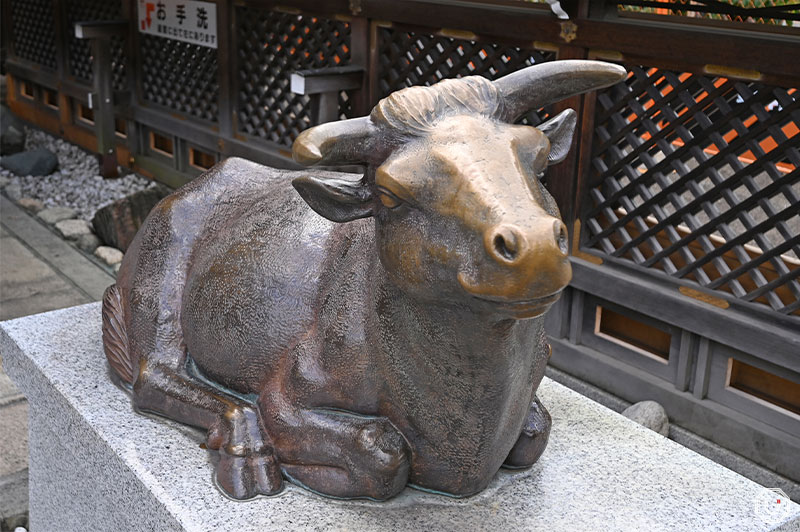
The nadeushi cow, made of metal
Because of this story, Yushima Tenmangu Shrine features statues of cows made of both stone and metal, which have become beloved symbols of the shrine. You’ll find various representations of cows in different parts of the shrine grounds.
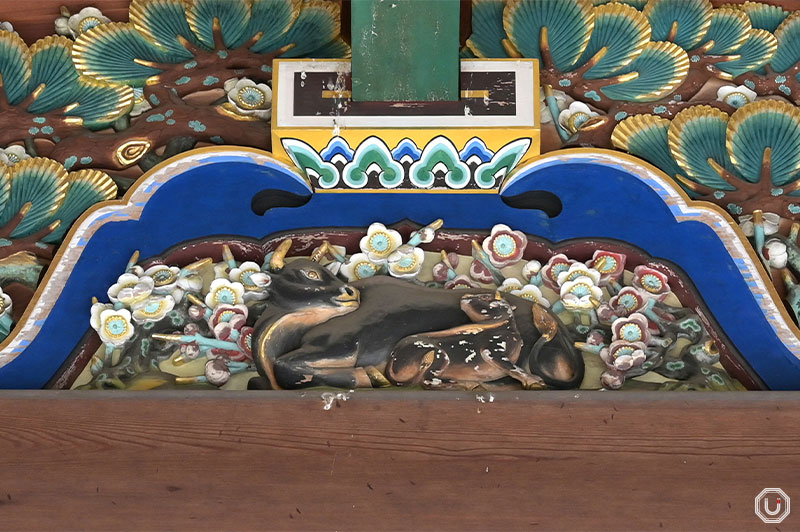
Climb the Otokozaka and Onnazaka steps
The shrine’s main torii gate is made of copper and is a designated cultural property of Tokyo.
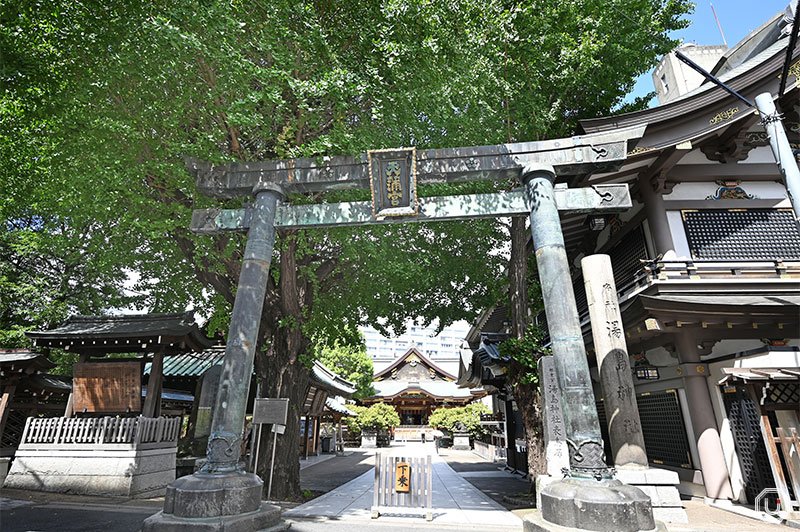
Admire the unique texture of the gate and look closely for the lion carving at its base.
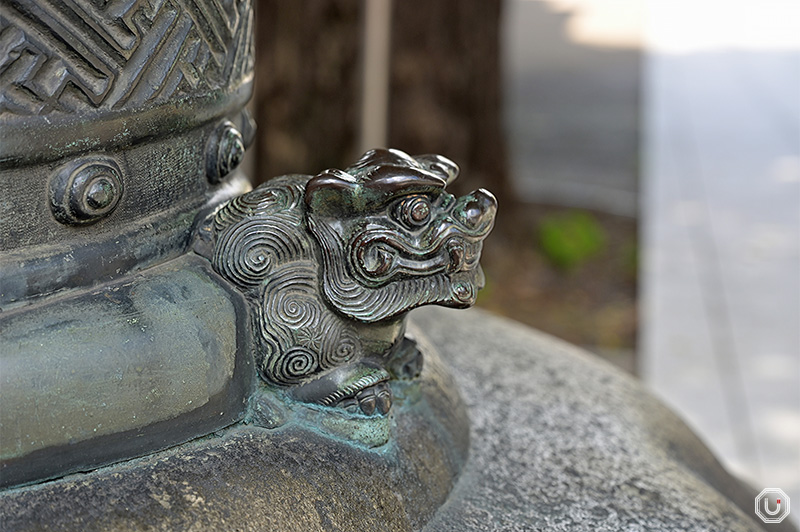
If you’re visiting from Yushima Station, you’ll first encounter a steep flight of 38 stone steps, called Otokozaka (literally, the “men’s slope”).
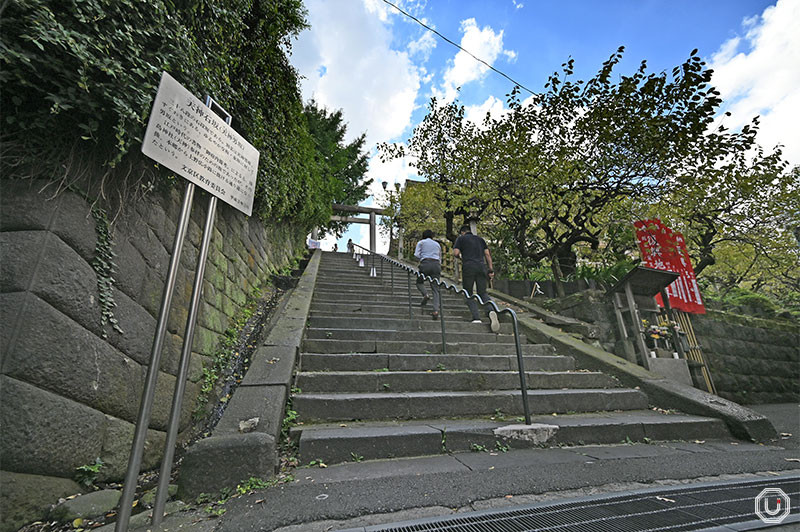
The Otokozaka stairs
Next to Otokozaka is the Onnazaka (literally, the “women’s slope”), a gentler incline that offers an easier path for those who prefer it. If the steep steps of Otokozaka seem daunting, Onnazaka is a great alternative.
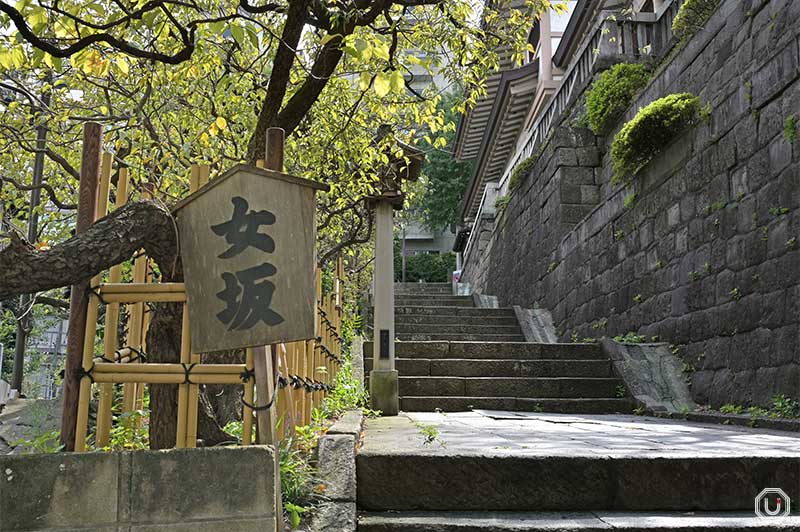
The Onnazaka stairs
Yushima Tenmangu Shrine has also appeared in various literary and theatrical works. Around the grounds, you’ll find monuments related to these stories, so take a moment to seek them out during your visit.
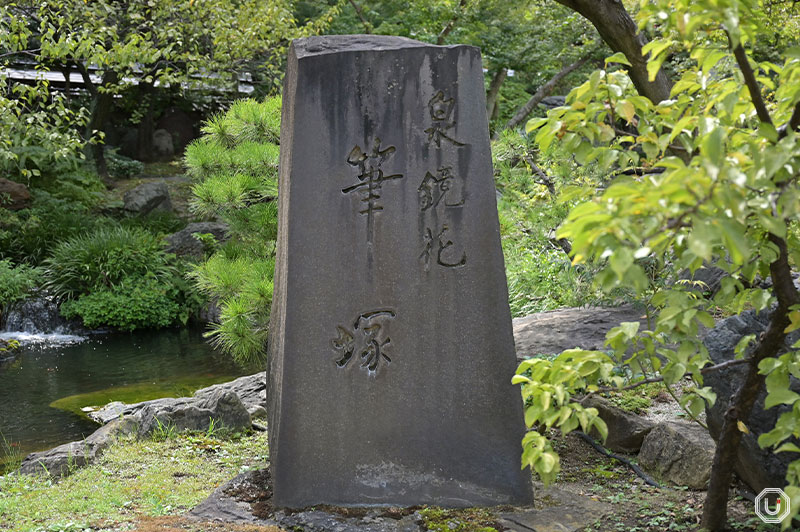
Monument to novelist Kyōka Izumi (1873-1939)
Unique charms like pencils and schoolbags
As a popular destination for students, the shrine offers many items related to academics. In addition to the typical omamori (amulets available at Japanese shrines and temples and granting good luck or protection) and ema (wooden votive plaques on which visitors write their wishes), practical items like pencil sets are also a hit.
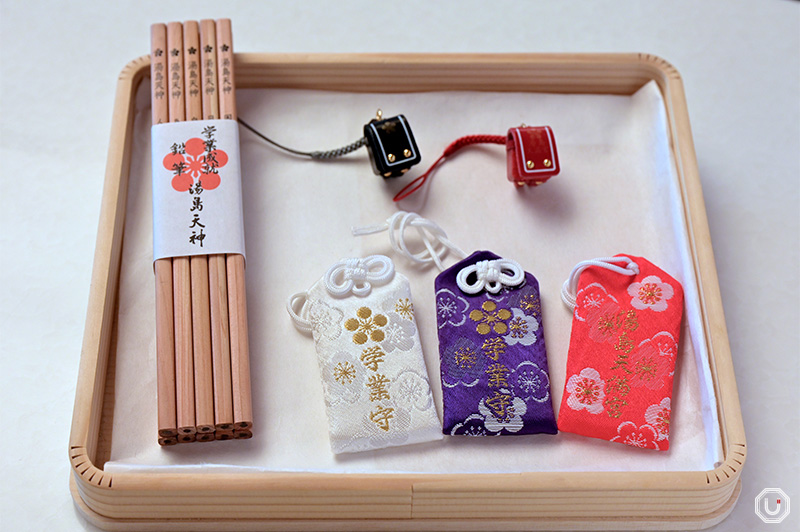
(Left) academic success pencils (set of 10) 1,000 JPY (tax included); (right top) Japanese schoolbag mamori 1,000 JPY (tax included); (right bottom) academic mamori 1,500 JPY (tax included)
The schoolbag omamori is particularly cute. There are also other items, such as headbands, traditionally used by students to motivate themselves for their studies. These make great gifts not only for students but also for friends and family members.
You can also get a goshuin (a special seal obtained as proof of pilgrimage) at the shrine office as a memorable keepsake of your visit.
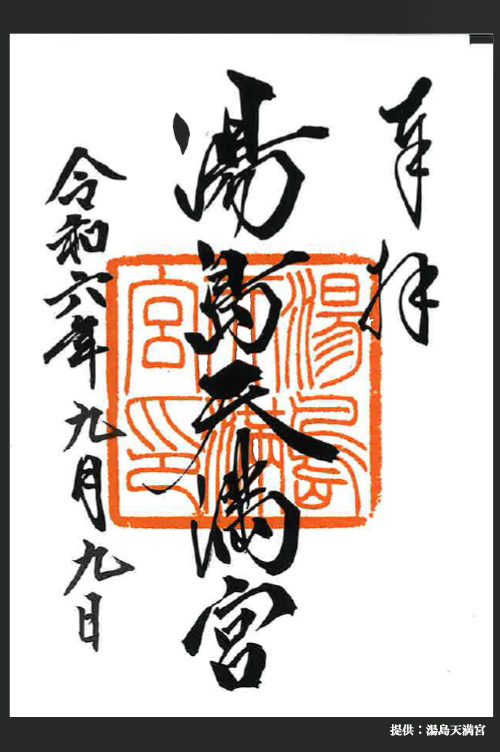
Goshuin 500 JPY (tax included)
Who was the tragic genius, Sugawara no Michizane?
Yushima Tenmangu Shrine is also called Yushima Tenjin. “Tenjin” refers to the deified name of Sugawara no Michizane, while Tenmangu denotes shrines that honor him as their main deity. Across Japan, there are an estimated 12,000 shrines dedicated to him.
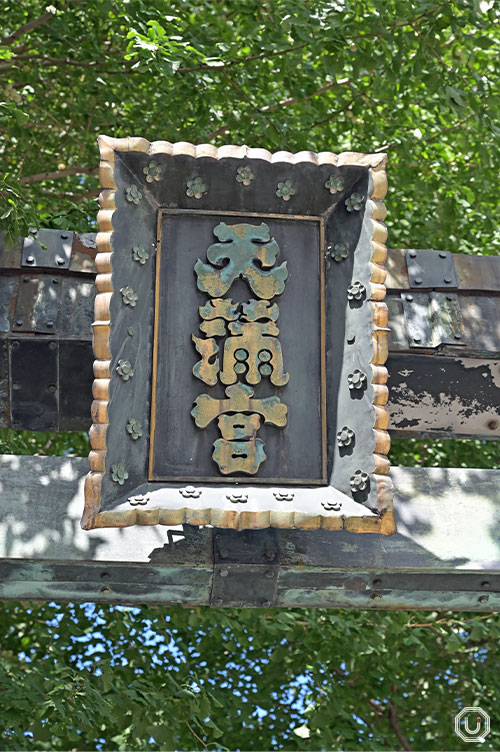
Kanji characters spelling “Tenmangu”
Sugawara no Michizane was born in 845 and showed remarkable academic abilities from an early age. He quickly gained the trust of the emperor and rose to high-ranking positions. However, rivals spread false rumors about him, leading to his exile in Dazaifu, Kyushu. Two years later, in 903, he passed away at the age of 59.
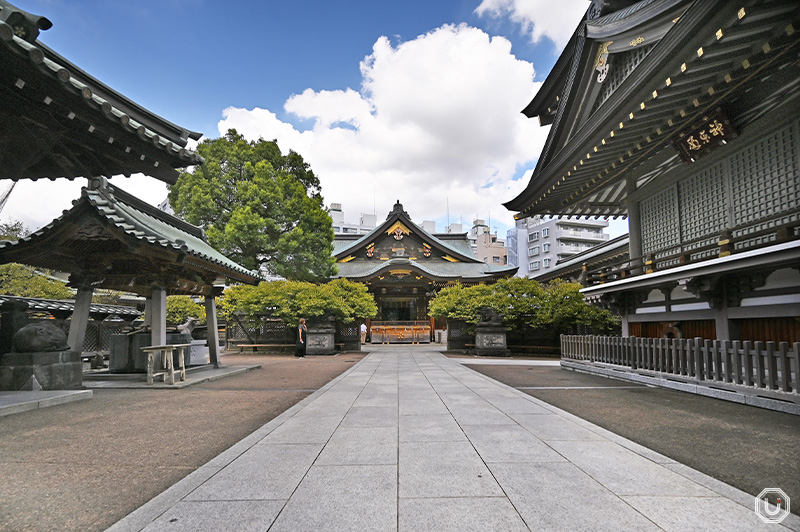
After his death, natural disasters such as earthquakes and lightning strikes plagued Kyoto, leading many to believe that Michizane’s spirit was seeking vengeance. Over time, farmers and villagers came to revere him as a god of rain and thunder, Tenjin. Eventually, he also became widely respected as a deity of academics and learning.
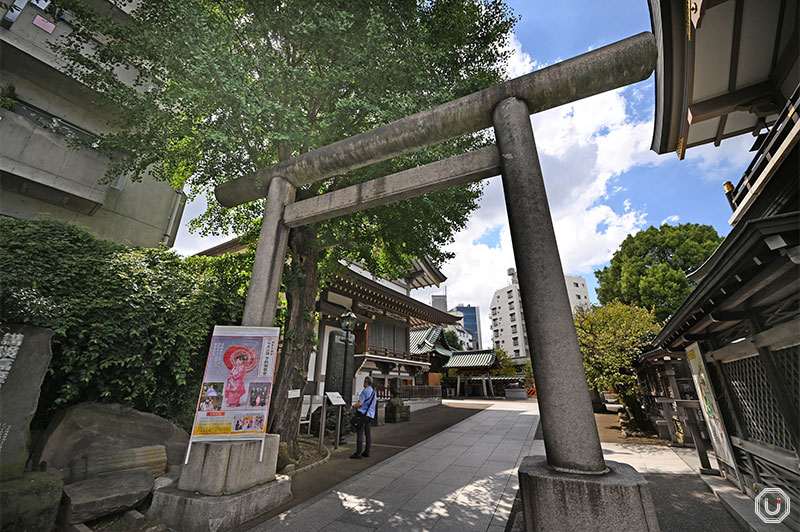
Sugawara no Michizane has been a beloved figure of worship for centuries, especially among common people, who view him as the revered “Tenjin.” When visiting Yushima Tenmangu Shrine, be sure to learn more about this fascinating deity and his storied history.
Shrine information
| Name | 湯島天満宮 Yushima Tenmangu |
|---|---|
| Address | 3-30-1 Yushima, Bunkyō-ku, Tokyo
|
| Access |
Yushima Station 3-minute walk from Exit 3
Ueno-hirokoji Station 7-minute walk from Exit A4
|
| Phone number | 03-3836-0753 |
| Visiting Hours | 6:00-19:30 |
| Sacred Items | 9:00-19:00 |
| Goshuin | 9:00-17:30 |
| Omikuji | 9:00-19:00 |
| Admission fee | Free |
| Official website | https://www.yushimatenjin.or.jp/pc/index.htm |
| Other information |
|
※The information in this article is current as of October 2024.
